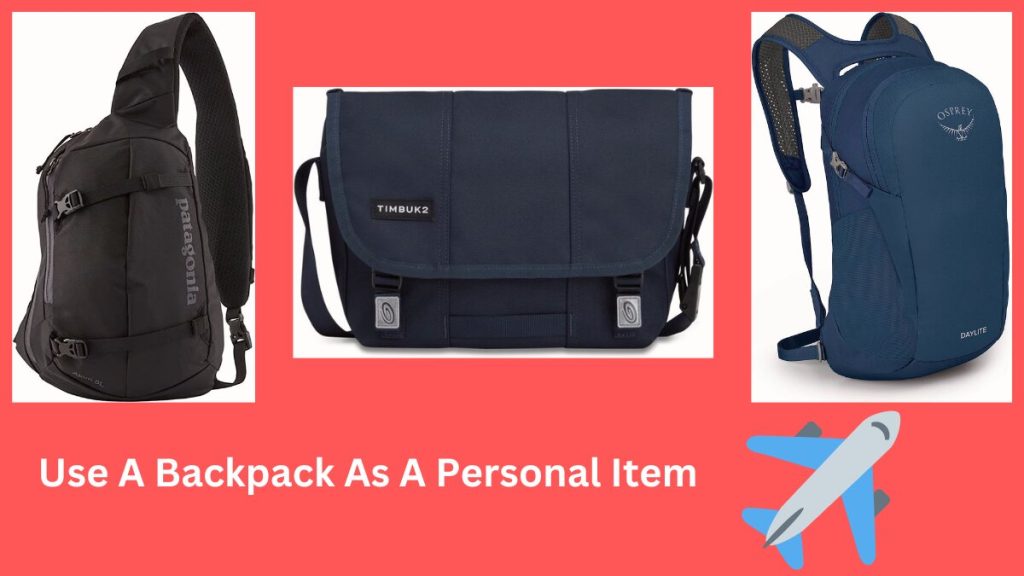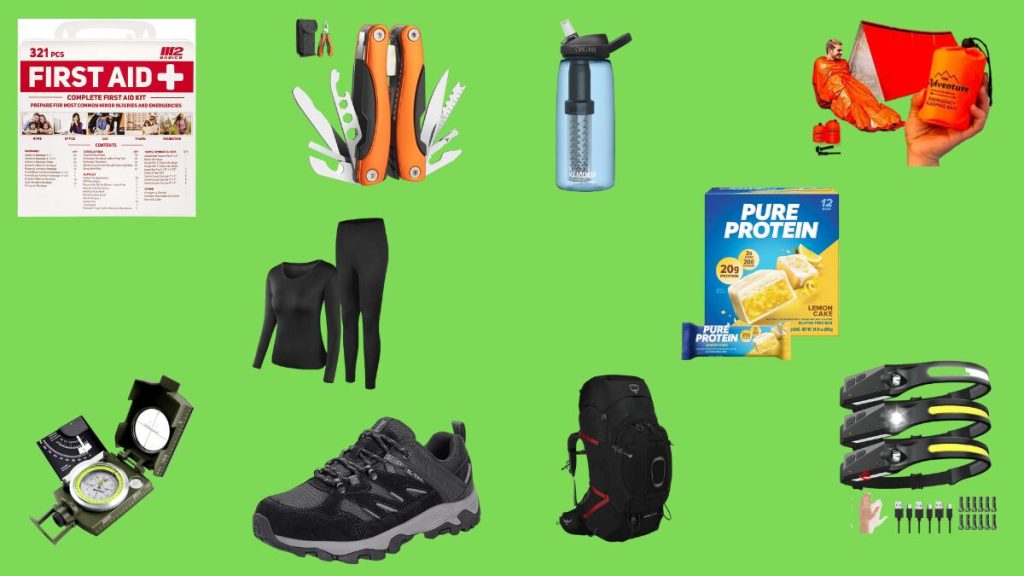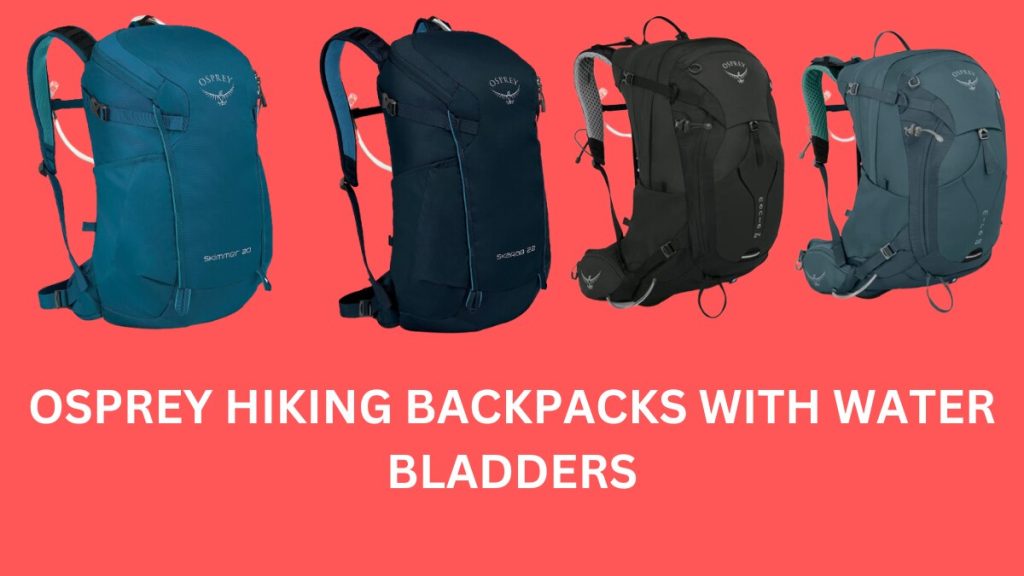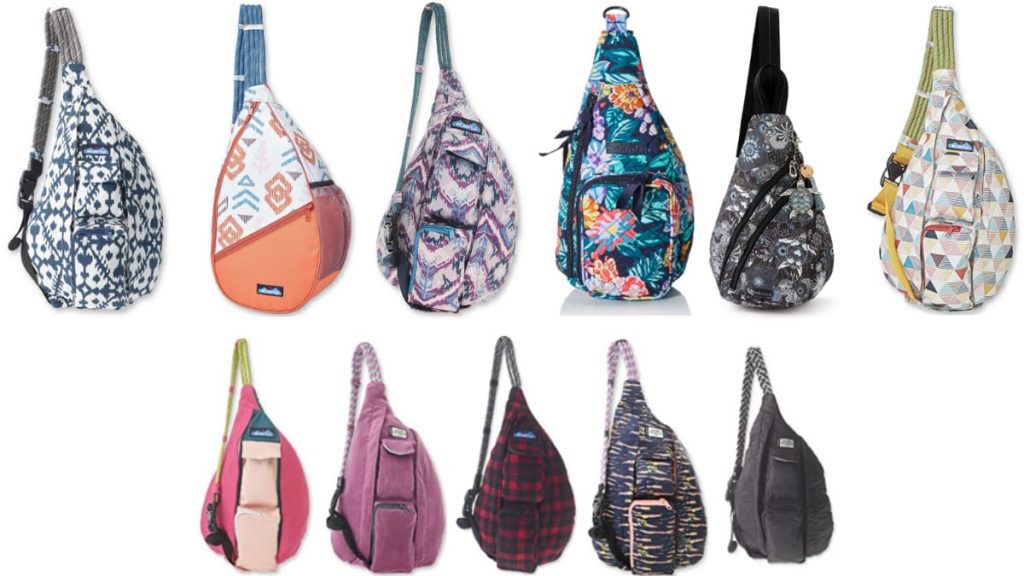When traveling by plane, it’s important to understand the rules and regulations surrounding what items you’re allowed to bring on board. One of the most crucial items to consider is your personal item, which is typically a smaller bag that you can carry onto the plane in addition to your carry-on luggage. Are you looking for the answer to “can I use a backpack as a personal item?”. Our expert guide will help you understand the rules and regulations for backpacks as personal item on airlines.
Learn what makes a backpack suitable as a personal item, the size limitations, and how to pack it efficiently for hassle-free travel. Don’t miss out on this comprehensive guide to ensure a stress-free and smooth journey.
Can I use a backpack as a personal item?
Yes, a personal item can be used to store important items such as your passport, phone, wallet, or medications that you might need during the flight. It can also be used to carry any additional items that you may not have space for in your carry-on, such as a book or a small blanket.
does backpack count as personal item
Yes, Backpacks are a popular option for a personal item because they’re versatile, easy to carry, and can fit many items. However, there are regulations that govern the size and type of backpacks that can be used as a personal item. In this article, we’ll explore these regulations and provide helpful tips on how to use a backpack as personal item when traveling by plane.
What Is a Personal Item?
A personal item is a smaller bag that you’re allowed to bring on board a plane in addition to your carry-on luggage. It’s typically smaller than a carry-on bag and is designed to fit under the seat in front of you.
The size and type of personal item allowed by airlines can vary, but typically it must be small enough to fit under the seat in front of you and not exceed certain dimensions. The purpose of a personal item is to allow passengers to carry essential items such as passports, phones, and medications, as well as any additional items that may not fit in their carry-on bags.
Examples of personal items
Examples of personal items include purses, laptop bags, small backpacks, and briefcases. Some airlines also allow other types of items such as small musical instruments, pet carriers, or umbrellas as personal items.
Airlines have regulations in place for personal items to ensure that they’re small enough to fit under the seat in front of you and not impede the safety of the flight. Airlines may also have weight restrictions in place for personal items. It’s important to check with your airline before you travel to ensure that your personal item meets their requirements. Failure to comply with airline regulations can result in additional fees or being forced to check your bag.
Types of Backpacks
There are many different types of backpacks, each designed for specific purposes. When it comes to using backpacks as a personal item when traveling, it’s important to consider the type of backpack that you have and whether or not it’s suitable for use as a personal item.
Some common types of backpacks include:
Daypacks
These are small, lightweight backpacks designed for short hikes or day trips. They typically have one or two compartments and are perfect for carrying a few essential items.
Travel Backpacks
These are larger backpacks designed specifically for travel. They often have multiple compartments and pockets for organizing different items, as well as padded straps and back panels for added comfort during long trips.
School Backpacks
These are backpacks designed for carrying books and school supplies. They’re typically larger than daypacks and may have specialized compartments for laptops or other electronics.
When it comes to using backpacks as a personal item, there are pros and cons to consider. One advantage of using a backpack is that they’re typically more comfortable to carry than a purse or briefcase, especially if you have a lot of items to carry. They’re also versatile and can be used for a variety of purposes.
However, backpacks can be bulky and take up a lot of space under the seat in front of you. Additionally, some backpacks may not be allowed as personal items if they exceed the airline’s size and weight restrictions. It’s important to check with your airline before you travel to ensure that your backpack meets their requirements.
Backpacks that may not be allowed as personal items include large hiking backpacks, backpacks with wheels, and backpacks with metal frames. Again, it’s important to check with your airline before you travel to ensure that your backpack meets their requirements.
Airlines’ Regulations on Personal Items
Airlines have specific regulations in place for personal items, including size and weight limits. These regulations are in place to ensure that personal items can fit under the seat in front of you and don’t impede the safety of the flight.
Size and weight limits for personal items
Size and weight limits for personal items can vary between airlines. Some airlines may allow larger personal items than others, while some may have stricter weight limits. It’s important to check with your airline before you travel to ensure that your personal item meets their requirements.
Examples of airlines and their personal item regulations include:
American Airlines
American Airlines allows passengers to bring one personal item, such as a purse or laptop bag, in addition to their carry-on bag. The personal item must fit under the seat in front of you and not exceed 18 x 14 x 8 inches.
Delta Air Lines
Delta Air Lines allows passengers to bring one personal item, such as a purse or laptop bag, in addition to their carry-on bag. The personal item must fit under the seat in front of you and not exceed 18 x 14 x 8 inches.
United Airlines
United Airlines allows passengers to bring one personal item, such as a purse or laptop bag, in addition to their carry-on bag. The personal item must fit under the seat in front of you and not exceed 17 x 10 x 9 inches.
Southwest Airlines
Southwest Airlines allows passengers to bring one personal item, such as a purse or laptop bag, in addition to their carry-on bag. The personal item must fit under the seat in front of you and not exceed 18.5 x 8.5 x 13.5 inches.
It’s important to note that these are just a few examples of airline regulations for personal items, and regulations can vary between airlines and even between different flights on the same airline. Always check with your airline before you travel to ensure that your personal item meets their requirements.
How to Pack a Backpack as a Personal Item
When packing a backpack as a personal item for air travel, it’s important to consider the size and weight restrictions of your airline. Here are some tips for packing your backpack as efficiently as possible:
- Use packing cubes or compression bags to maximize space and minimize weight. These can help you organize your items and compress them down to save space.
- Pack only what you need. Remember that you’re only allowed a certain amount of space for your personal item, so pack only the essentials. Avoid packing items that you can easily purchase at your destination.
- Place heavy items at the bottom of the backpack, close to your back. This will help distribute the weight evenly and make it more comfortable to carry.
- Use the pockets and compartments in your backpack to organize your items. This will help you find what you need quickly and easily, without having to dig through everything in your backpack.
Recommended items to pack in a personal item backpack include:
- Electronics, such as a laptop or tablet, and their chargers
- Any necessary medications
- A change of clothes or a lightweight jacket
- A travel pillow or blanket
- Snacks and water
Remember to always check with your airline before you travel to ensure that your backpack meets their size and weight requirements for a personal item.
Benefits of Using a Backpack as a Personal Item
Using a backpack as a personal item for air travel can have many benefits. Here are some of the advantages of using a backpack as a personal item:
Versatility and practicality
Backpacks are versatile and can be used for a variety of purposes. They are also practical for travel, as they can easily be carried on your back and leave your hands free for other tasks.
Reduced luggage fees
Many airlines charge fees for checked baggage or even carry-on bags. By using a backpack as a personal item, you can avoid these fees and save money on your travel expenses.
Convenience and accessibility
When using a backpack as a personal item, you can easily access your items during the flight without having to get up and retrieve them from the overhead bin. This can make your travel experience more convenient and comfortable.
Comfort and support
Backpacks are designed to distribute weight evenly across your back and shoulders, which can help prevent discomfort or pain during travel.
Mobility and ease of movement
With a backpack as a personal item, you can easily move through crowded airports or other travel locations without having to worry about rolling luggage behind you.
Overall, using a backpack as a personal item for air travel can be a practical and convenient choice for many travelers. It can also save you money on luggage fees and provide you with easy access to your items during the flight.
Drawbacks of Using a Backpack as a Personal Item
While there are certainly advantages to using a backpack as a personal item for air travel, there are also some potential drawbacks to consider. Here are a few disadvantages of using a backpack as a personal item:
Size limitations
Most airlines have strict size limits for personal items, and backpacks may not always meet these requirements. If your backpack is too large, you may be forced to check it as a carry-on or pay additional fees.
Lack of storage space for larger items
If you need to bring larger items, such as a suit or dress, a backpack may not provide enough space to accommodate them. This could require you to bring an additional bag or check your backpack as a carry-on, which could be inconvenient and potentially costly.
Comfort and convenience issues during travel
While backpacks can be comfortable to wear for short periods of time, they may become uncomfortable if you need to wear them for an extended period of time, such as during a long layover or a delay. Additionally, accessing items in a backpack can be more difficult than with a carry-on bag or a purse, as you may need to remove the backpack or reach around to access certain compartments.
Organization and security concerns
When using a backpack as a personal item, it can be more difficult to keep your items organized and secure, particularly if you have to remove the backpack for security screening or if you need to store it in an overhead bin during the flight.
Overall, while backpacks can be a convenient and practical choice for a personal item during air travel, there are some limitations and potential drawbacks that travelers should be aware of before making a decision.
Alternatives to Backpacks as Personal Items
While backpacks can be a popular choice for a personal item during air travel, there are also several other types of bags that can serve the same purpose. Here are a few alternatives to backpacks as personal items, along with some factors to consider when choosing a bag:
Tote bags
Tote bags can be a stylish and practical choice for a personal item. They are typically larger than purses or clutches, but still compact enough to fit under the seat in front of you. Tote bags may also have additional pockets and compartments for organization.
Duffel bags
Duffel bags can be a good option if you need to bring larger items or clothing. They are typically soft-sided and can be easily squeezed into overhead compartments. Duffel bags may also have wheels or straps for easy carrying.
Messenger bags
Messenger bags can be a good choice for those who need to carry a laptop or other electronics. They often have padded compartments for electronics and may also have additional pockets and compartments for other items.
When choosing a personal item bag, there are several factors to consider, including:
Size and weight
Most airlines have specific size and weight limits for personal items, so be sure to choose a bag that meets these requirements.
Comfort and convenience
Choose a bag that is comfortable to carry and provides easy access to your items during the flight.
Organization and security
Look for a bag that has enough pockets and compartments to keep your items organized, and consider the bag’s security features, such as locks or RFID-blocking technology.
Style and durability
Choose a bag that reflects your personal style and is made from durable materials that can withstand the wear and tear of travel.
When comparing backpacks to other bags, it ultimately comes down to personal preference and what type of items you need to carry. Backpacks can be a good choice for those who need to bring smaller items and prefer a hands-free carrying option, while tote bags, duffel bags, and messenger bags may be better suited for those who need to bring larger items or prefer a different carrying style.
Tips for Choosing the Right Backpack as a Personal Item
Choosing the right backpack as a personal item can make a big difference in your travel experience. Here are some factors to consider when choosing a backpack, along with some recommendations for backpacks that are suitable for use as personal items:
Size
Most airlines have specific size requirements for personal items, so be sure to choose a backpack that meets these requirements. Look for backpacks that are compact and can fit easily under the seat in front of you.
Material
Choose a backpack that is made from durable materials that can withstand the wear and tear of travel. Materials such as nylon or polyester can be good choices, as they are lightweight and water-resistant.
Weight
Keep in mind that your personal item, including your backpack, will need to fit within the airline’s weight limits. Look for backpacks that are lightweight to help you stay within these limits.
Compartments and pockets
Look for backpacks that have multiple compartments and pockets to help you stay organized during your flight. This can be especially helpful if you need to bring electronics, such as a laptop or tablet.
Comfort
Choose a backpack that is comfortable to wear, especially if you will be carrying it for extended periods of time. Look for backpacks that have padded straps and back panels to help distribute weight and prevent discomfort.
Here are some backpacks that are recommended for use as personal items:
Osprey Daylite Daypack
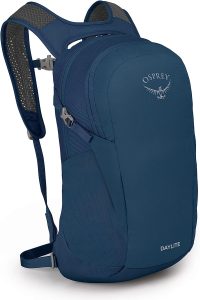
This compact backpack is lightweight and durable, with multiple compartments and pockets for organization. It also has padded straps and back panel for comfort.
Patagonia Atom Sling 8L

This sling backpack is a great option for those who prefer a single-strap carrying option. It has a large main compartment and multiple pockets for organization.
Timbuk2 Classic Messenger Bag
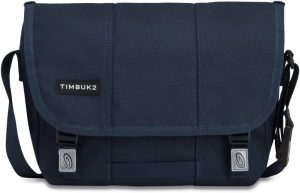
This messenger bag is a good choice for those who need to carry a laptop or other electronics. It has a padded laptop compartment and multiple pockets for organization.
When choosing a backpack as a personal item, be sure to keep in mind the airline’s regulations and your own travel needs. With the right backpack, you can stay organized, comfortable, and within airline weight limits during your flight.
How to Wear a Backpack as a Personal Item
Wearing a backpack as a personal item during travel can be a convenient option, but it’s important to do so properly for safety and comfort. Here are some tips for wearing a backpack as a personal item:
Keep it light
Remember that your personal item, including your backpack, needs to fit under the seat in front of you. Keep the weight of your backpack light to avoid discomfort and ensure that it fits easily in the designated space.
Wear it correctly
When wearing your backpack, make sure to adjust the straps so that the weight is evenly distributed across your shoulders and back. The backpack should sit snugly against your back, with the straps not too tight or too loose.
Consider the contents
Be mindful of what you pack in your backpack and how it may affect your comfort and safety. Avoid packing sharp or bulky items that may poke or prod you, and ensure that any liquids or gels are properly sealed to avoid spills.
Use a waist strap
If your backpack has a waist strap, use it to help distribute the weight of the backpack and relieve pressure on your shoulders.
Keep it in front
During takeoff and landing, it’s a good idea to place your backpack in front of you to avoid any potential injuries in the event of turbulence.
By following these tips, you can wear your backpack as a personal item comfortably and safely during your travels. Remember to also consider the airline’s regulations on personal items and backpacks to avoid any issues during your flight.
Frequently Asked Questions – can i use a backpack as a personal item
Can I bring a backpack and a personal item on a plane?
Can I bring a backpack and a carry-on bag on a plane?
Can I bring a backpack and a laptop bag on a plane?
Can a backpack fit under an airplane seat?
Can I bring a large backpack as a personal item?
Do airlines weigh personal items?
Can I use a hiking backpack as a personal item?
Can I bring a backpack and a purse on a plane?
Can I bring a backpack and a camera bag on a plane?
Can I bring a backpack and a shopping bag on a plane?
conclusion – can i use a backpack as a personal item
In conclusion, backpacks can be a convenient and practical option for travelers looking to use a personal item on their flights. Understanding the regulations and restrictions set by airlines is crucial when considering a backpack as a personal item. It is important to choose the right size and style of backpack, as well as to pack it correctly and wear it comfortably during travel.
While backpacks may have some drawbacks, such as size limitations and lack of storage space for larger items, they offer many benefits, including versatility, reduced luggage fees, and accessibility. However, travelers should also consider alternative options, such as tote bags or duffel bags, depending on their specific needs.
When selecting a backpack for use as a personal item, factors such as material, size, weight, and durability should be considered, and specific backpacks may be recommended for use as personal items.
Overall, using a backpack as a personal item can be a convenient and practical choice for travelers, and with proper planning and preparation, it can make air travel more comfortable and efficient.

